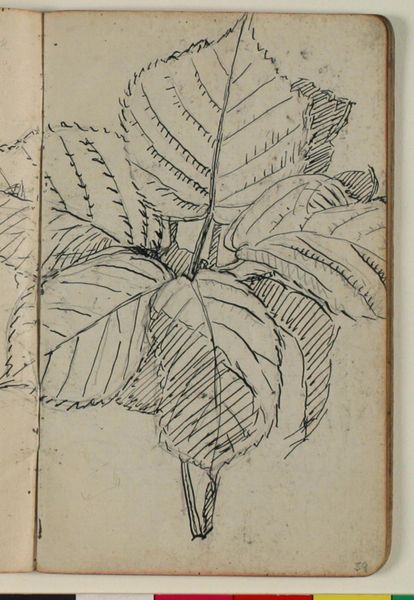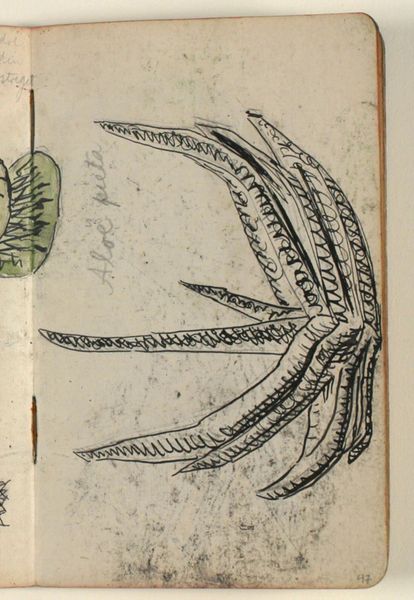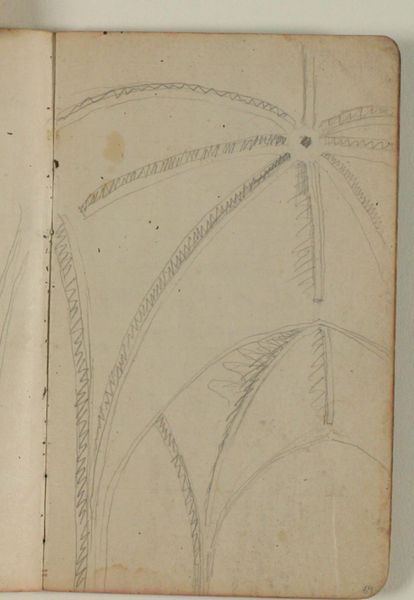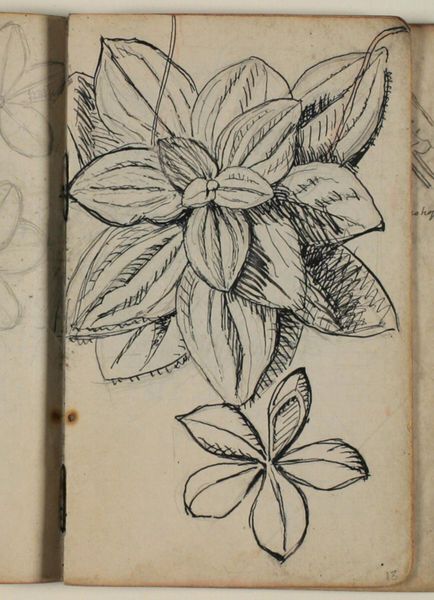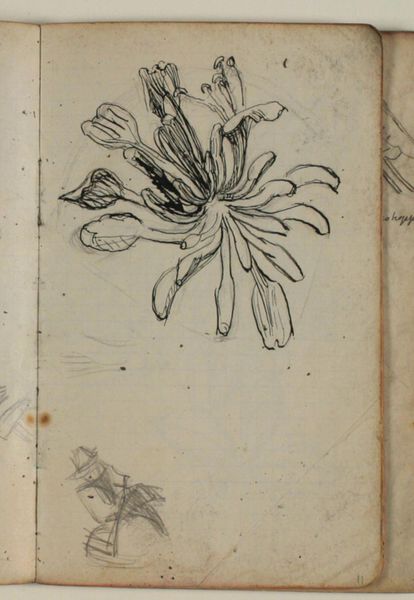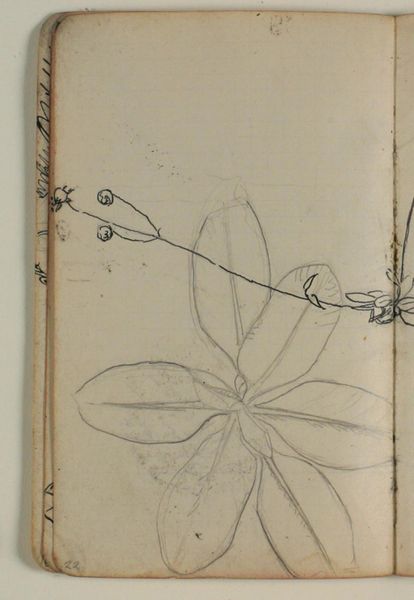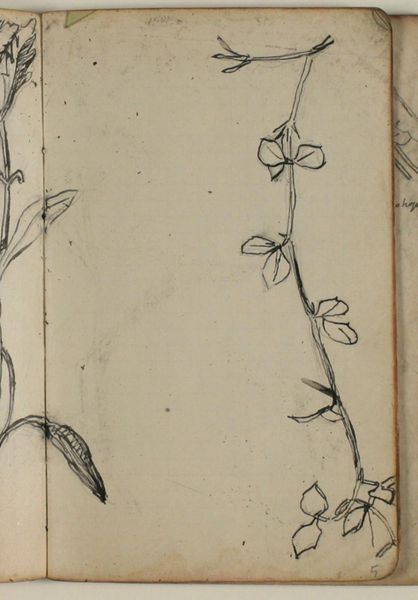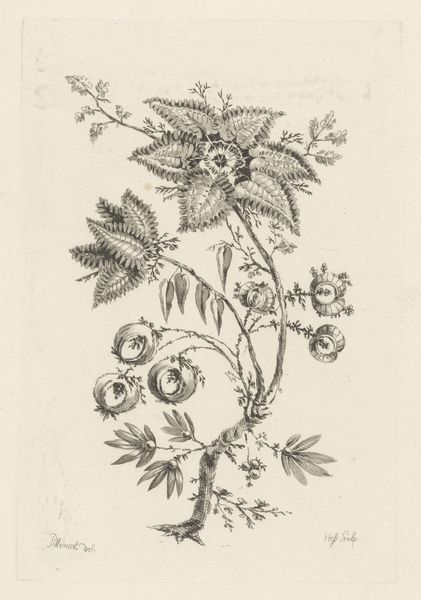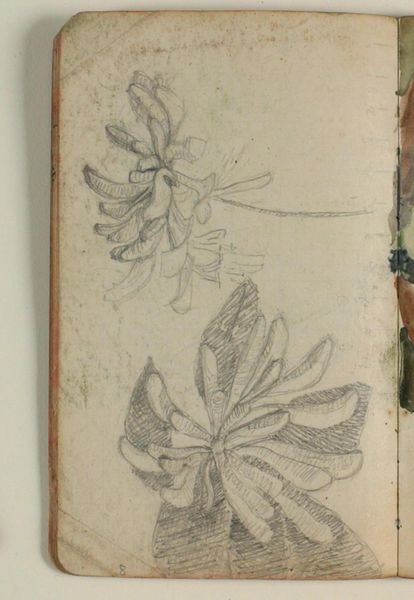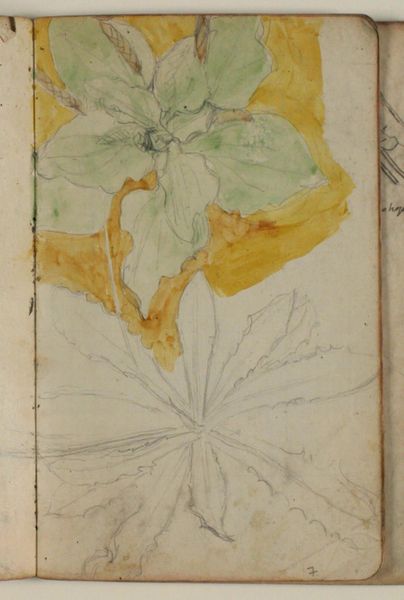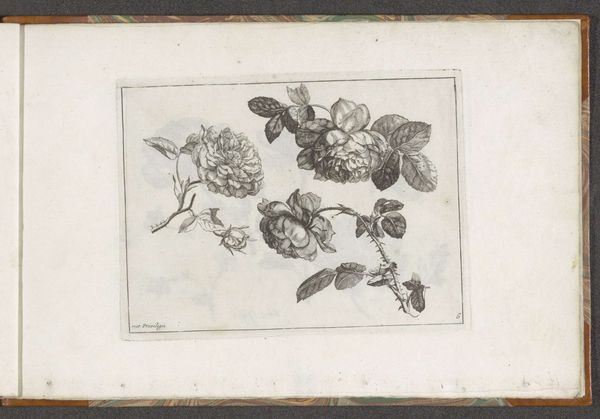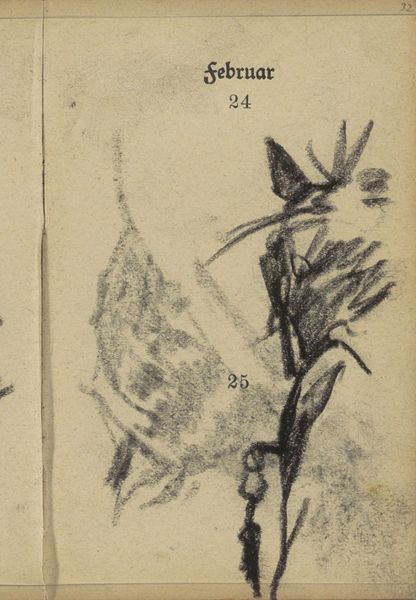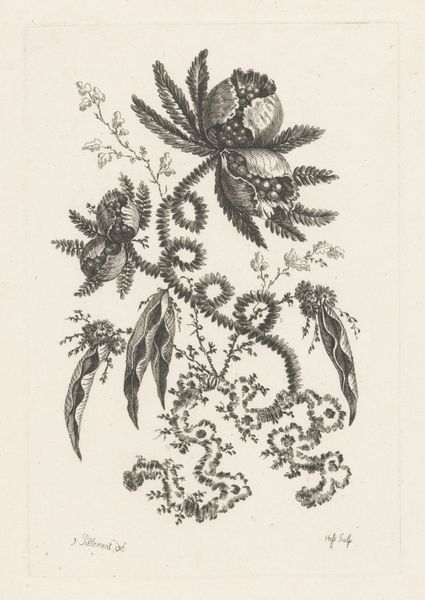
drawing, paper, ink
#
drawing
#
paper
#
ink
#
coloured pencil
#
naturalism
Dimensions: 161 mm (height) x 96 mm (width) (bladmaal)
Curator: Here we have a drawing entitled "Plantestudie" or "Plant Study" by Niels Larsen Stevns, created sometime between 1906 and 1910. The work, executed in ink on paper, resides here at the SMK, the Statens Museum for Kunst. Editor: There's something incredibly delicate about the linework. The repeated, almost scratchy strokes give it a raw, unfinished quality. Is that a sketchbook page it's drawn on? The binding adds to the intimacy. Curator: Indeed, it’s reminiscent of studies done outdoors in the naturalist style. One immediately considers Stevns' relationship to his subject matter, the immediate, hands-on encounter with nature—where it's made, where the paper comes from, how the ink itself would have been produced at the time. Editor: I agree—you can see that this piece captures the essential form of a plant, but it isn't simply reproductive. The cross-hatching gives the leaves dimension. It gives it depth, which invites me to linger and look closer at these repeated gestures. Curator: The choice of medium, the ink on paper, is essential in framing our understanding. Think of the accessibility, of what that choice suggests about artistic training. Stevns, working during a time of considerable industrial and economic growth, would have seen readily accessible, mass-produced materials like these changing artistic production in complex ways. Editor: While acknowledging the material and economic context, it's equally important to consider Stevns' compositional choices here, for instance, and what they communicate visually and symbolically. The radial symmetry draws our eye to the center and speaks to ideas about harmony and the balance of nature, echoed in his drawing technique. Curator: Agreed, and how does the artist’s approach impact our consumption of the natural world in the early 20th century? Are we, as viewers, being invited into the controlled, domesticated space of a botanical study or presented with a rugged field exploration? What expectations were set by its initial audience? Editor: For me, the tension between meticulous rendering and implied spontaneity adds depth, which leaves me thinking about art's enduring ability to express complex beauty simply and directly. Curator: A valuable insight. Ultimately, analyzing "Plant Study" forces us to confront how the artist’s material decisions mediate the ever-changing social and environmental relationships within art making.
Comments
No comments
Be the first to comment and join the conversation on the ultimate creative platform.
